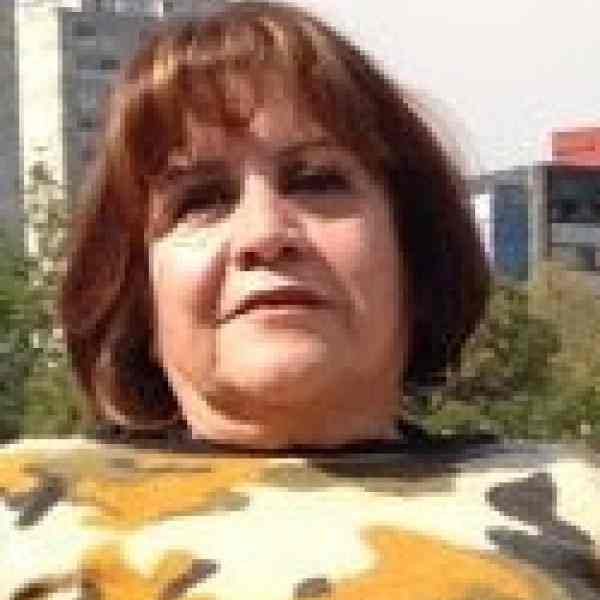Introduction
Director of athletics at the National Autonomous University of Mexico, despite being a paraplegic, Marta Heredia now plans to shift her considerable energy to demonstrate an economic approach to helping other spinal cord injury victims recover and reintegrate usefully into society.
The New Idea
Most of Mexico's 600,000 spinal cord injury victims do not receive the medical, rehabilitative, and reintegrative–let alone the psychological help these grievously hurt people need. When their lives (and those of their families) suddenly suffer long-term and dramatic damage, typically after an accident, Mexico has virtually no specialist capacity to help.
Marta proposes to remedy this situation by demonstrating new economic ways of providing the substantial, sustained help these people need. Recognizing that there will never be enough trained medical, psychological, and therapist professionals that current care models would require to treat so many victims, even if the vast amounts of money necessary to pay them all could be found, she's looking to other resources. These are chiefly: (a) the victims' families and (b) a new class of paraprofessionals she proposes to recruit from the roughly one-third of recovering victims with the necessary temperament.
Thus, training former patients to be therapists helps them recover. Moreover, Marta feels they are the most qualified people to understand and attend to the emotional needs of those struck down by this trauma, for they too have lived through it.
Marta's first base will be a simple clinic. Around this center, she'll weave a mix of medical curative care, physiotherapy, and psychological and emotional help. She hopes to demonstrate that such integrated help, offered to the victim and his or her family promptly, (a) works and (b) can be affordable.
The Problem
The Red Cross reports that some 19,000 people a year suffer spinal injuries in Mexico, most the result of automobile accidents. In Mexico City, one in nine people are disabled and roughly 15 percent of that total are spinal cord severance victims.
Altogether roughly 600,000 Mexicans have been disabled for the rest of their lives by such accidents. They generally lead frustrated and dependent lives. Largely out of sight, they linger in back rooms–commonly angry, manipulative, and hurtful to their family's stability and psychological health as much as to its finances.
Mexico's health system is almost totally unprepared to deal with this vast problem. What limited physical rehabilitation centers there are have to deal with all forms of physical damage. They are designed to deal with recent accidents, not the hundreds of thousands of long-term spinal cord victims that have accumulated over decades of inattention. Moreover, these centers have only limited psychological capacity, and they have been pretty much geared to deal only with the quite different needs of recent (and generally less acute) victims.
There is also very little training capacity in place to fill this enormous gap. In part this reflects the lack of medical facilities in which therapists might be trained. Psychology departments have no specific programs to cover the needs of such deeply traumatized patients–even though the whole pattern and prospect of their lives has been suddenly broken, making anxiety, depression, anger, guilt, and a rich variety of unconstructive adaptations common.
The Strategy
Marta has two main thrusts to her strategy: treatment and training.
In association with an orthopedics specialist, Marta plans to set up an initially small medical center with 40 patients in a rented house in Mexico City. Within five to ten years, however, she expects that the program will have grown to the point of being able to reach approximately 100,000 sufferers a year. Her treatment approach integrates medical, physiotherapy, and psychological care.
Marta's most important innovation, however, is in engaging both families and victims as a new army of care-givers. They have the motivation. Many have the potential. They are the only plausible affordable source for the massive number of hours of care required. Without such care most sufferers deteriorate, adding needlessly to their and their families' misery.
The critical prerequisite to launching this new army is training. Marta will train former patients to treat new patients and, indeed, to set up their own centers. The training will cover both psychotherapy and physical therapy. Later she will have to help them train others as well.
She insists on the need for the patient's family to be involved in the early stage of treatment, something that conventional clinics don't usually consider. Their learning that something can be done helps prevent destructive dependency and/or guilt-anger cycles from taking root. Ultimately, organized, hopeful, and linked patients, their families, and former patients can become a force demanding changes in the broader public attitudes and policies that would prove hard to ignore.
Finally, Marta plans to influence doctors and psychologists by organizing professional meetings and publishing articles on her new approach.
The Person
Marta Heredia is a psychologist and was herself disabled as a result of polio at the age of two. However, as one of the panel members put it, "she has five times more energy than the average person without any physical restrictions." Proof of this is her personal history: she has been president of the National Wheelchair Sports Association since 1981. She is currently director of sports at the National University of Mexico, and was a pioneer in setting up the University Association to eliminate architectural barriers.
